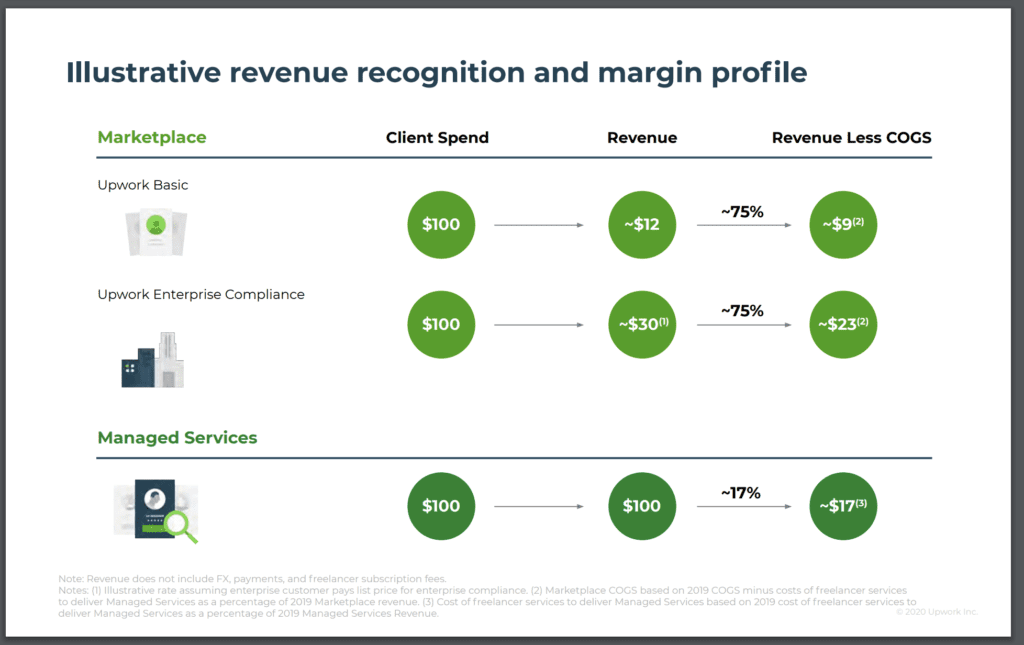
Upwork is one of those products and marketplaces many of us use all the time — including Team SaaStr — but we don’t often see discussing that much as a public SaaS / Cloud company.
But it should be. Upwork’s now worth $6B and $400m+ in ARR growing a healthy 24% Year-over-Year, and has gotten a solid Covid boost, if perhaps not quite the boost of some other Cloud leaders. Perhaps this is because Upwork already sort of powered the distributed workforce even before Covid.

So what can we learn?
5 Interesting Learnings:
1. 100% Client Spend Retention across 139,000 Customers. This is interesting. I would have expected lower than 100% net revenue retention from Upwork, given that much of the spend can be episodic. On the other hand, happy customers should also spend more (as Team SaaStr does). Net net, even from SMBs, Upwork manages 100% NRR, just as Shopify and Hubspot do from SMBs. So don’t settle for less.

2. 80% SMB, 20% Enterprise. This makes the 100% NRR especially impressive in the space. While Upwork has made inroads into the enterprise, it remains squarely an SMB product.

3. Upwork keeps a healthy 12% of all customer spend, and up to 30% in the enterprise. A good take rate for a marketplace. Upwork charges from 5%-20% of the service price (less the more you make through the platform), averaging out to 12%. Keeping fees low at 5% for the top earners encourages them to stay on the platform and not go direct with their top clients.

4. 20% of clients represent 80% of the revenue. While not unexpected, it’s a similar distribution to both other marketplaces and many SaaS businesses. A reminder to really segment and understand your customer base.

5. Upwork really just starting to go upmarket now, at $400m in ARR. So it’s never too late! Upwork only now is looking at making deeper investments in a dedicated enterprise salesforce. It makes sense though. With 30% of the Fortune 100 using Upwork, but only 20% of its revenue from customers with more than 100 employees, there’s clearly a ton of room to expand with larger customers. When you see a segment making up more than 10% of your revenue and growing, lean into it.

More in this series here in SaaStrU’s FREE course on Growth here:


